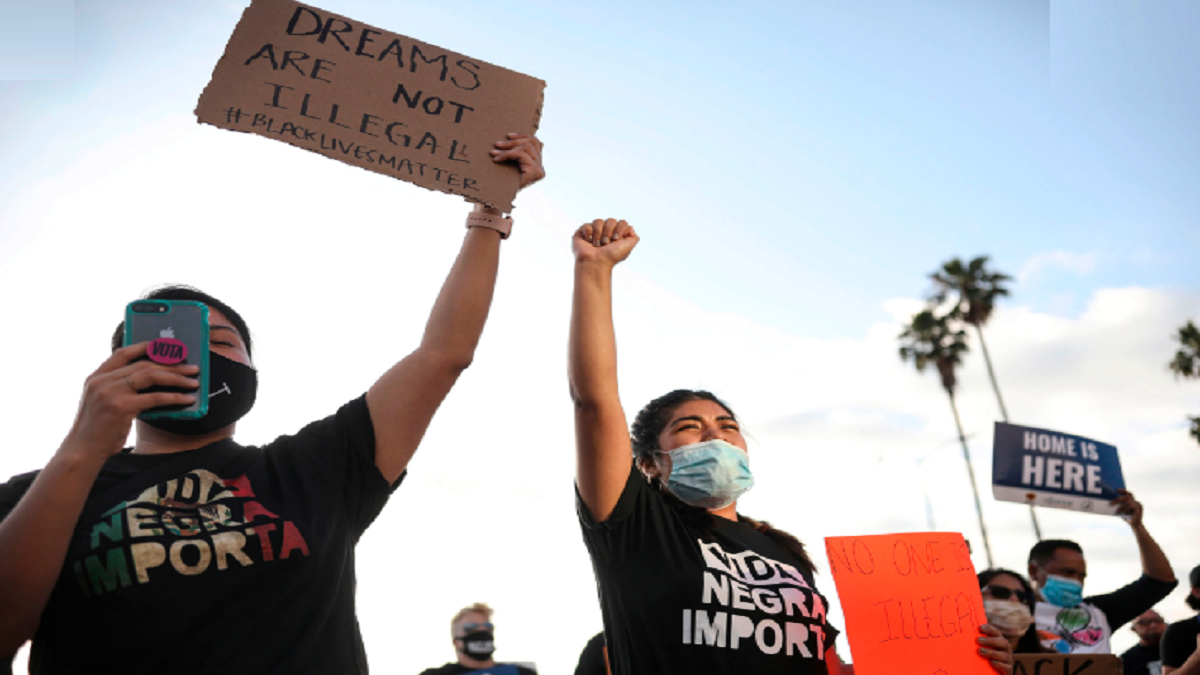Seven lakh children, brought illegally in the US by their families before their 16th birthdays. Seven lakh children, looking for a better future or an escape from their previous living conditions. Seven lakh children, trapped in a ravaging cycle of restrictions. Restriction from colleges; restriction from jobs; restriction from housing. Restriction from the one thing they came chasing after: the American Dream. If given the proper resources, these children could become assets, not only to themselves and their families, but also to the entire American society. For this to happen, these children needed a little nudge. And like a dream come true, this nudge came in the form of an immigration policy known as Deferred Action for Childhood Arrivals (DACA).
DACA protects these youth from deportation and provides them with a work permit for two years. DACA recipients are commonly referred to as Dreamers, which stems from the inspiration behind the DACA policy, the DREAM Act of 2001. President Barack Obama, being an avid supporter of the DREAM Act, converted it into an executive order named DACA. Out of these 700,000 Dreamers, almost 7,000 of them come from South Asian countries. In fact, almost 17,000 Indians in the US could apply for DACA, which puts India in the top ten countries for DACA eligibility. While DACA is stereotypically seen as a policy for Hispanic/Latino individuals, East and South Asians also benefit tremendously from this nudge.
The eligibility for this programme is decided by a thorough screening to check if the recipient meets certain requirements. These include age, duration of stay in the US, education, and behavioural requirements. To become a Dreamer, you need to have come to the US prior to your 16th birthday, you need to be in some type of schooling, and you cannot have been convicted of a felony or more than three misdemeanours. As President Donald Trump once called them, the “hardened criminals” don’t have a single felony. Almost 90% of them don’t even have a single arrest.
A Helping Hand
Since its inauguration on 15 June 2012, over 900,000 immigrants have at one time fallen under DACA. It has allowed previously undocumented youth to get driving licences, open bank accounts, and get jobs that provided financial stability. A study by a multitude of universities and NGOs found that more than 72% of the top 25 Fortune 500 companies employ DACA recipients. A Forbes report found that these companies account for $2.8 trillion in annual revenue. The same study found that 5% of Dreamers open businesses. For US residents who don’t fall under DACA, only 3.1% of them open businesses. With an almost 2% gap, Dreamers are more likely to start a new business than a non-Dreamer. Furthermore, the average annual median income of a US resident is $31,000 and the average annual median income of a Dreamer is $32,000. Being above average in all aspects of life despite incredibly difficult circumstances, these Dreamers are helping our economy and our job market. In fact, over the next decade, the Dreamers are projected to contribute $460.3 billion to the US gross domestic product.
The Struggle
Despite all of these outcomes, the new presidential administration decided to take action in an attempt to remove the DACA policy. On 5 September 2017, under President Trump’s guidance, the Department of Homeland Security (DHS) released an official memo to rescind the DACA policy. But this decision was met with constant scrutiny. Between January 2018 and June 2020, three federal district courts ruled against President Trump to partially sustain DACA, first in Regents of the University of California, et al. v. Dept. of Homeland Security, and later in Wolf v. Vidal and NAACP v. Trump. The district courts decided that the USCIS must continue accepting petitions from previous recipients.
A Dream Come True
These decisions were challenged at higher courts on appeal, and finally, the US Supreme Court heard oral arguments for Regents of the University of California, et al. v. Dept. of Homeland Security on 12 November 2019, and issued its decision in a 5-4 opinion written by Chief Justice Roberts, on 18 June 2020. Their opinion declared that the DHS had improperly terminated DACA and the original memo was withdrawn. The court provided their reasoning by citing the Administrative Procedure Act (APA), which states the rules of federal regulations. The decision to rescind DACA was both arbitrary and capricious under the APA.
The court resolved that the DHS had not properly distinguished between revoking the work permits, while still providing protection from deportation. It also pointed out that the DHS had not taken reliance interests into consideration. Reliance interests included all the businesses, property, and jobs that belonged to the Dreamers. A report provided by 143 businesses found that hiring and training replacements for the Dreamers would cost employers over $6.3 billion. Ultimately, the court reaffirmed the decision made in NAACP v. Trump and upheld the DACA policy, a victory for all of America.
Throughout history, the US Supreme Court has made many monumental decisions, which impact different parts of all of our lives. This DACA case joins many others in shaping the integrity of our nation and its future. With this decision, those 700,000 Dreamers can continue benefiting our nation. The Dreamers have seen their dreams, touched their dreams, and now, they can live their dreams.
Aparna Dave is US Immigration Attorney. Om Desai is a High School Intern at The Law Office of Aparna Dave.























